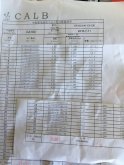Hi form Norway.
I have got hold of a bunch of blue CALB 100 Ah LiFePo4 cells from a condemmed car for a real low price (about 20$ a piece). I think the cells are more than 5 years old, but testing them I see that they still deliver about 90% capacity. The cells are somewhat different in capacity, and also how they discharge.
I intend to install 20 of them for domestic use in my boat and plan to do a 5P 4S installation with a manual monitoring system.
This should give me a useable capacity of about 350 Ah in 12V (I intent to carge them with not more than 13,8 V and not discharge them to more than 80% DOD).
Question: How shall I pick which cells to use and what should I look up for?
I have got hold of a bunch of blue CALB 100 Ah LiFePo4 cells from a condemmed car for a real low price (about 20$ a piece). I think the cells are more than 5 years old, but testing them I see that they still deliver about 90% capacity. The cells are somewhat different in capacity, and also how they discharge.
I intend to install 20 of them for domestic use in my boat and plan to do a 5P 4S installation with a manual monitoring system.
This should give me a useable capacity of about 350 Ah in 12V (I intent to carge them with not more than 13,8 V and not discharge them to more than 80% DOD).
Question: How shall I pick which cells to use and what should I look up for?





